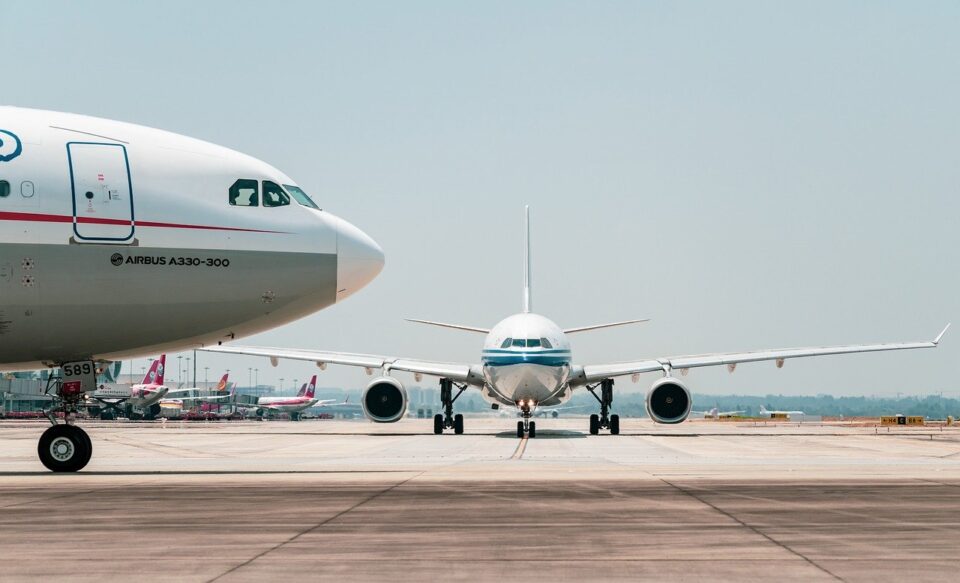Aerospace
SpaceX’s satellite internet service is coming to planes
SpaceX’s satellite internet service Starlink will soon be accessible aboard some planes

With the official launch of Starlink Aviation next year, SpaceX’s satellite internet service Starlink will soon be accessible aboard some planes, the firm has revealed. According to the company, the service would provide internet speeds of up to 350 Mbps to any aircraft fitted with its Aero Terminal. This speed is sufficient for video calls, online gaming, and “other high data rate activities.
How Does In-Flight Wi-Fi Really Work?(Opens in a new browser tab)
According to SpaceX’s website, its internet connections will be accessible during taxi, takeoff, flight over land and ocean, and landing, with latency as low as 20ms. An FAQ states that “Starlink Aviation will offer worldwide coverage.” As opposed to geo-stationary satellites, which are static, low-earth orbit satellites are always overhead or close to deliver a powerful signal at high latitudes and in polar regions. Beginning in mid-2023, deliveries are anticipated.
Starlink Aviation was able to provide onboard internet at a speed of 100Mbps. The test was carried out by JSX, which declared in April that it will be among the first airlines to use the in-flight internet service, on a route from Burbank to San José, California.
Frontier Airlines Hiring Candidates With No Flight Experience(Opens in a new browser tab)
In September, JSX CEO Alex Wilcox stated that he anticipated making it available to passengers this month and having the technology installed on every aircraft operated by the company by the end of the year. In April, Hawaiian Airlines also announced a deal with Starlink, with installation beginning the next year.
The goal of SpaceX’s Starlink project is to create a worldwide, interconnected network of satellites that will provide high-speed internet. Nearly 3,500 Starlink satellites have been sent into orbit by SpaceX, and as of June, the service has about 500,000 subscribers. With $2 billion raised just this year, the business has been rapidly raising funds to support the construction of both Starlink and its next-generation rocket Starship.

Aerospace
Boeing Transfers Rocket Stage to NASA, Paving Way for Human Moon Mission

Boeing has achieved a significant milestone by providing NASA with the second core stage of the Space Launch System (SLS) rocket.
This crucial component, crafted at NASA’s Michoud Assembly Facility (MAF), is set to propel the Artemis II crew into lunar orbit, marking humanity’s return to deep space after a 50-year hiatus.
The monumental Boeing-built rocket stage, the largest element of the Artemis II mission, will embark on a journey aboard the Pegasus barge, traveling 900 miles to NASA’s Kennedy Space Center.
Comparison of two legendary aircraft B777x vs B747 aircraft:Click here
Upon arrival, it will be meticulously integrated with other essential Artemis II components, including the upper stage, solid rocket boosters, and NASA’s Orion spacecraft within the iconic Vehicle Assembly Building. This intricate integration process is a vital step toward the eagerly anticipated Artemis II launch, slated for 2025.
“Boeing-built products helped land humankind on the moon in 1969, and we’re proud to continue that legacy through the Artemis generation,” remarked Dave Dutcher, vice president and program manager for Boeing’s SLS program. “Together, with NASA and our industry partners and suppliers, we are building the world’s most capable rocket and paving the way to deep space through America’s rocket factory in New Orleans.”
NASA, Lockheed Martin Reveal X-59 Quiet Supersonic Aircraft:Click here
The delivery of Core Stage 2 marks a significant achievement in the evolution of the SLS rocket. Towering over 200 feet and powered by four RS-25 engines, this core stage, coupled with two solid-fueled booster rockets, will generate a staggering 8.8 million pounds of thrust. This immense power is crucial to launching Artemis II and future missions into the vast expanse of space.
The SLS rocket stands unparalleled in its capability to transport both crew and substantial cargo to the moon and beyond in a single launch. Its extraordinary capacity will facilitate the delivery of human-rated spacecraft, habitats, and scientific missions to destinations including the moon and Mars, ushering in a new era of space exploration.
-

 Travel1 week ago
Travel1 week agoAir India to Expand US Operations with Three New Routes After a Decade
-

 Travel2 weeks ago
Travel2 weeks agoWhy We Should Avoid These Stamps in a Passport
-

 Airlines1 month ago
Airlines1 month agoInvestigations Reveal Fake Chinese Titanium in Boeing and Airbus Jets
-

 Tech4 weeks ago
Tech4 weeks agoChina’s CATL Plans 1,800-Mile Electric Plane Launch by 2027
-

 Airport3 days ago
Airport3 days agoTop 10 Largest Airports in the World by Size
-

 Aerospace4 weeks ago
Aerospace4 weeks agoChina’s Fighter Jets Turn Wings into Autonomous Drones
-

 Airlines4 days ago
Airlines4 days agoAir India Rolls Out A350s for Delhi-New York JFK and Newark Routes
-

 Defence3 weeks ago
Defence3 weeks agoBoeing Enhances Chinook with New Engines and Block II Upgrades at $96 Million







